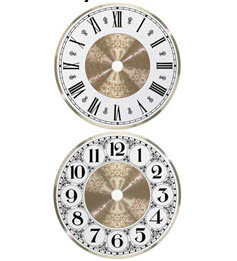+1 888 123 4567

What Makes Clock Dials Eye-catching
Clock dials are extremely important wrist watch components for assisting the onlooker to tell the moment; nevertheless, that does not suggest they have to be mundane, as well as sometimes they are actually quite artful. Clock dials are the prime focus of the item in regards to design, and consequently they provide a statement. A clockmaker therefore picks whether to produce something purely practical or to use up some initiative in developing an attractive object to be appreciated as well. Can clock dials be made attractive according to some formula or unformulated set of rules? This resembles asking, "What is art?" or "What is music," and certainly the concern is so subjective that the variety of feedbacks will correspond to the variety of participants. Rather, we seek to individuality of expression, innate to every person (though perhaps latent), borne on the wings of ideas. Even so, there are objective guidelines to help us, rooted in such well-known perceptual realities such as proportion as well as the Golden Mean (or Golden Proportion), both of which show numerous events in nature. In this light it makes sense to wish to balance type and function as opposed to enable one to overwhelm the various other. The functional objective is to facilitate an essentially instantaneous grasp of the time; the official objective is to make the experience pleasurable or at the very least not in any way damaging. We also recommend not leaving it there, yet to expand the symmetrical harmonizing idea to the type itself. The objective is a visual harmony of all the parts, unifying them into an overall whole. Work with the percentage of the hands, both about each other and also the pair about the dial and its collection of numbers. Currently transform your attention to design choices, considering clock face choices in tandem with those for the hands. One strategy could be to make the particular styles identical; another may be to differ the designs somewhat yet make them complementary. Some combination ought to order you cosmetically as well as make the job specifically attractive to you. When starting event parts for your clock, start with the motion as well as the attributes it supports rather than on the looks of the item. This aids narrow down the set of selections and maintain you from obtaining overloaded. In other words, figure out performance before fretting about type. This is one of the most practical method due to the fact that the chosen clock activity frequently determines the dial layout. As an example, some movements use a 24-hour cycle as opposed to the much more common 12-hour cycle, or you may have an interest in having an extra hand to display the level of the trend, the day of the week, or the day in the month. In all these situations the movement feature established dictates the calibration (both size and also layout) of the equivalent dial and also the number (and dimension) of hands to order. A word should additionally be claimed about useds, although they are primarily peripheral to a write-up concerning dials. You can choose not to have one (the activity will certainly do just great without it), to have one that tips with a tick in a jerky motion, or to have one that sweeps along quietly and constantly. Your selection has some quantity of effect on the appearance of your clock, so take a moment to consider it. An extremely vital point is that the hands as well as the history shade of the dial should be well contrasted; this is actually good sense in attaining the preferred performance of getting the moment with a quick glimpse. A lot of the remainder of your choices are mosting likely to have to do with just how the job looks. The visitor needs to now have a much better suggestion of what makes clock dials appealing.woodworking clock insert